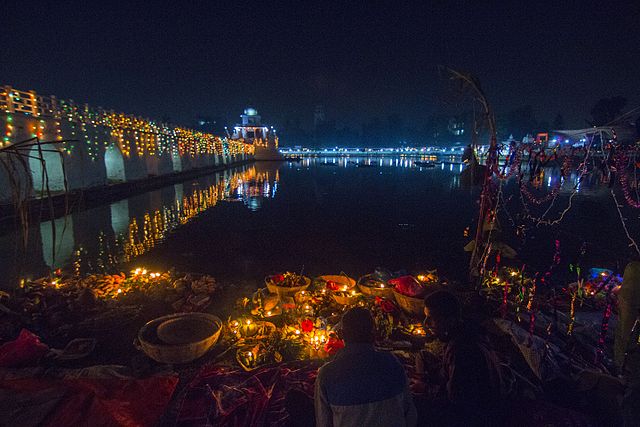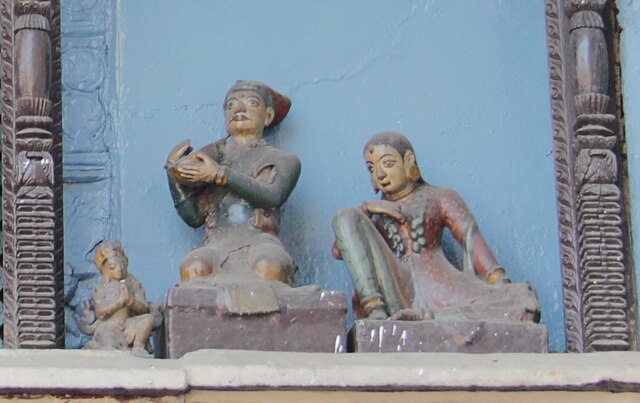Rani Pokhari, originally known as Nhu Pukhu, is a historic artificial pond located in the heart of Kathmandu, Nepal. The square-shaped tank dates from the 17th century, and was built on the eastern side of the then city limits. It lies just outside a former city gate. The pond is one of Kathmandu's most famous landmarks and is known for its religious and aesthetic significance. Its dimensions are 180m by 140m.
Rani Pokhari in 2020 after restoration
King Pratat Malla with his sons on an elephant at Rani Pokhari.
Chhath celebration at Rani Pokhari
Ranipokhari being restored with bricks instead of concrete
Pratap Malla was a Malla king and the eighth King of Kantipur from 1641 until his death in 1674. He attempted to unify Kathmandu Valley by conquering Lalitpur and Bhaktapur, but failed in the effort. He was successful in extending and securing the borders of Kantipur and was responsible for the monopoly over trade with Tibet. The resulting prosperity led to the construction of the majority of the buildings around Durbar Square during his reign. His reign is seen as a cultural and economic high point of the Malla dynasty.
Pratap Malla, playing a lute, and his queen, seen in the niche above the Hanuman Dhoka Palace gate
Parthibendra Malla, son of Pratap Malla, ruled Kathmandu from 1680–1687 CE.
Kabindrapur built by Pratap Malla.
Statue of Pratap Malla with his wives and sons at Hanuman Dhoka Palace.








